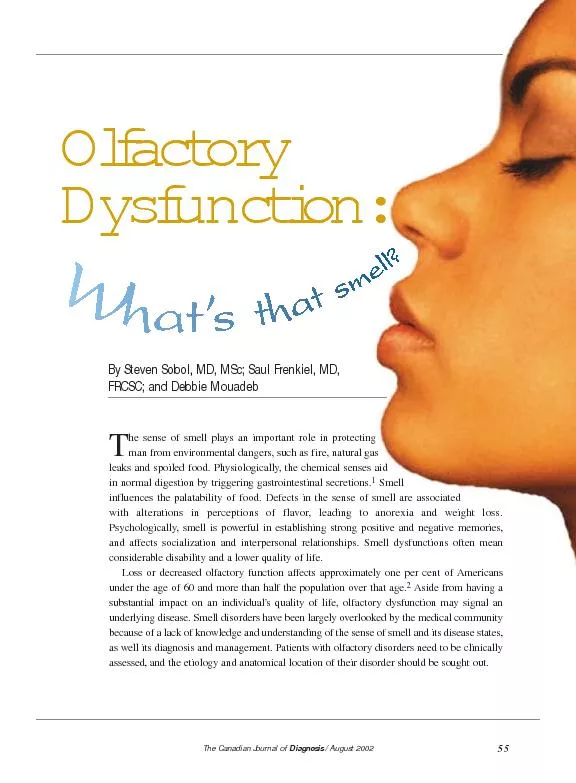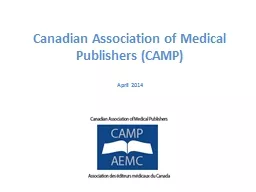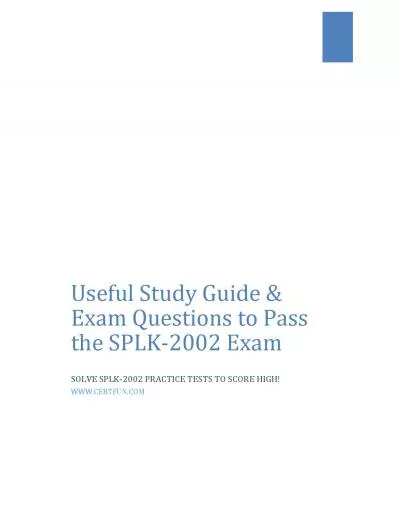PDF-he Canadian Journal of/ August 2002
Author : faustina-dinatale | Published Date : 2016-07-03
By Steven SobolMDMScSaul FrenkielMDFRCSCand Debbie Mouadeb he sense of smell plays an important role in protectingman from environmental dangers such as fire natural
Presentation Embed Code
Download Presentation
Download Presentation The PPT/PDF document "he Canadian Journal of/ August 2002" is the property of its rightful owner. Permission is granted to download and print the materials on this website for personal, non-commercial use only, and to display it on your personal computer provided you do not modify the materials and that you retain all copyright notices contained in the materials. By downloading content from our website, you accept the terms of this agreement.
he Canadian Journal of/ August 2002: Transcript
Download Rules Of Document
"he Canadian Journal of/ August 2002"The content belongs to its owner. You may download and print it for personal use, without modification, and keep all copyright notices. By downloading, you agree to these terms.
Related Documents














